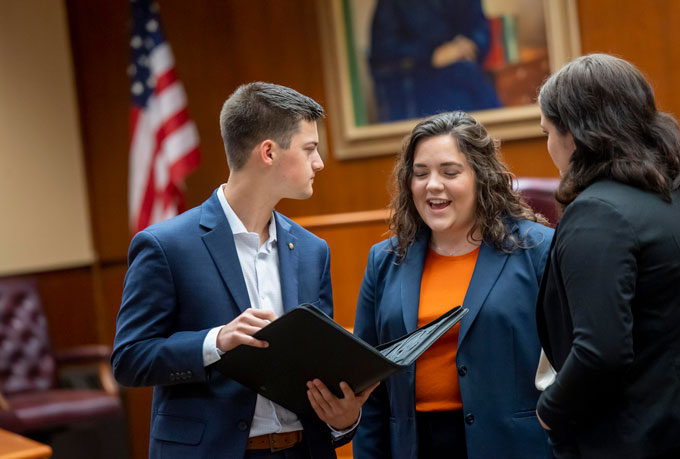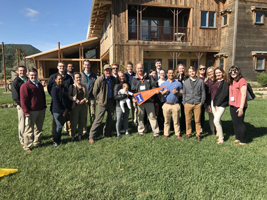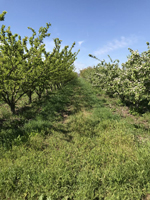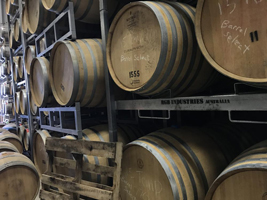Final Countdown: Last Day in California

[ACE 292 Experiential Study Tour to California | Spring 2017]

Our first stop of the day was at Full Belly Farms, where the group met with Paul Muller and his daughter Hallie, as well as Hallie’s cute baby girl, Clementine! Their farm is fully organic, producing a large variety of crops as well as housing a large number of chickens. The Muller family bought the farm about thirty years ago, and now it is a full family affair with Paul, his wife, their children and their respective spouses all owning parts of the farm and contributing their own success to it. Tomatoes, potatoes, and flowers are a few of the more popular commodities Full Belly Farm produces and sells at farmer’s markets around the state. A preschool is also on the farm, as well as a beautiful kitchen where baked goods are made for purchase, all made with ingredients from the farm. Full Belly also offers space to rent for private events, such as weddings. Summer camps are offered for children, where they can come learn more about agriculture and organic farming. Seeing how many products can be made from one farm is amazing and very inspiring. Thank you very much to Paul and Hallie (and Clementine!) for the great tour, and thank you for sharing your thoughts and farm with us for the day!

The second person we met with today was Craig McNamara. Craig is currently the president of Sierra Orchards, which primarily produces organically grown walnuts. After eating lunch with Mr. McNamarain Winters, California, we headed to the first of two locations of his operation. Upon reaching the farm, we noticed a flock of sheep grazing in the orchard. Mr. McNamara explained that this flock was being used to eat down the grass and to add fertilizer to the area. We also noticed how the bottom of the trees seemed different than the top. Mr. McNamara told us that this was due to a process called grafting. This is when you take a hardier breed of walnut for the trunk and then attach a more productive breed to the top of it creating the best tree combination for the conditions. The last thing Mr. McNamara showed us was a million dollar walnut huller that was installed last year. This large machine sorts quality walnuts from the rest in an efficient manner. We then moved to the second location, which hosted a larger variety of commodities. Some examples include blackberries, persimmons, free range chickens, and much more. It also had a very large set of solar panels, which power several aspects of the farm. We left Sierra Orchards gaining more knowledge on how large-scale organic farming operates.
Mid-afternoon brought us to Button Turkovich Farms, our last stop of the day and last official stop of the trip. We met with Tony Turkovich, who told us of all the different crops grown on Button Turkovich Farms. One notable difference about this farm is that they use many of their crops for seeds. These are called vine seed crops. Examples include watermelons, cucumbers, and squash. They also grow a large volume of tomatoes, and those are used for canning. An interesting fact is that within four hours of being picked, their tomatoes are at the canning plant and in cans.

The second part of the stop included a short trip to the Turkovich Winery. This portion of the business is run by Tony’s son and daughter-in-law, Chris and Luciana. The production facility contains many barrels on rows of shelves. As we learned, empty wine barrels are very expensive. The most expensive kind they buy is a French barrel that can cost up to $2000. Chris says that getting into the wine business takes a lot of investment up front but can be financially rewarding. The variety, including the vine seed crops and winery, was awesome at the Turkovich Farm.
Thanks for following our trip to California! We hope you enjoyed reading about it as much as we enjoyed experiencing, reflecting, and reporting on it!